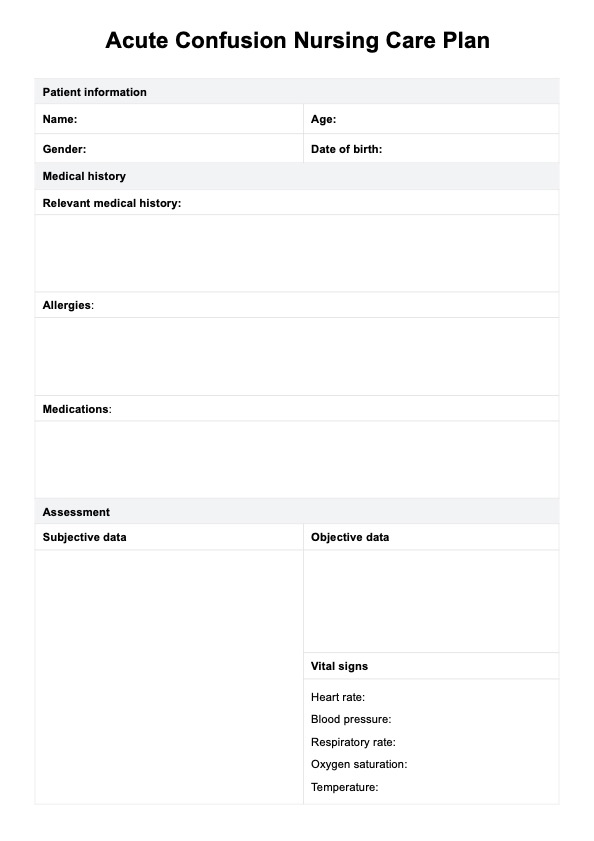Acute confusion can result from a complex and interconnected process involving various factors such as head trauma, drug-induced delirium, infections, or disruptions in the central nervous system. Environmental factors, such as unfamiliar surroundings or sleep deprivation, may also contribute.

Acute Confusion Nursing Care Plan
Optimize patient care with our Acute Confusion Nursing Care Plan template to streamline assessment, intervention, and management for optimal outcomes.
Acute Confusion Nursing Care Plan Template
Commonly asked questions
A registered nurse can create a calm environment and ensure familiar objects surround the patient to reduce disorientation. They also work closely with family members to support orientation and cognitive stimulation to reduce illogical thinking.
Family members can play a crucial role by providing comfort, bringing familiar objects, and helping to reduce confusion. Their presence can help confused patients feel more secure and reduce the stress that may worsen confusion symptoms.
EHR and practice management software
Get started for free
*No credit card required
Free
$0/usd
Unlimited clients
Telehealth
1GB of storage
Client portal text
Automated billing and online payments











